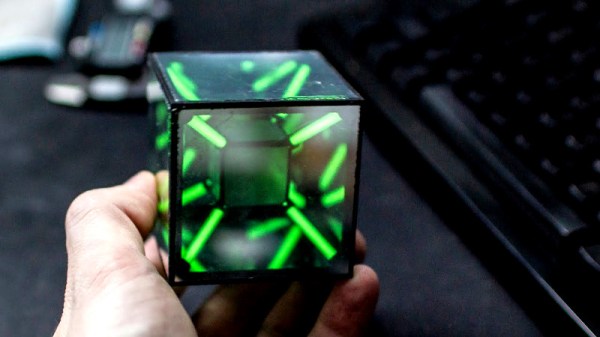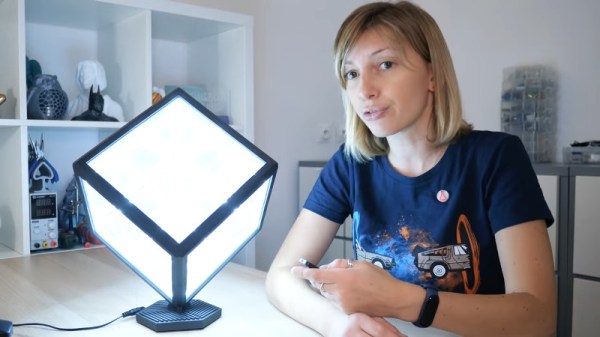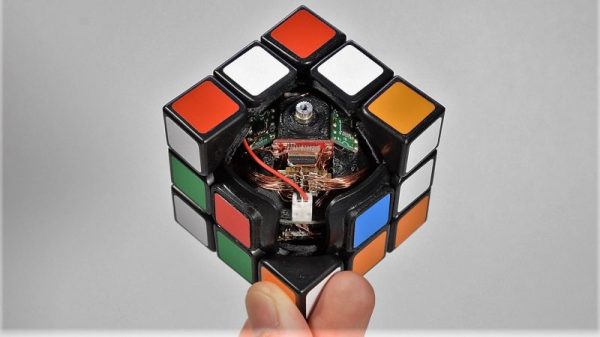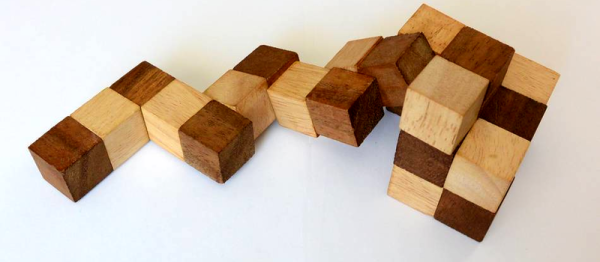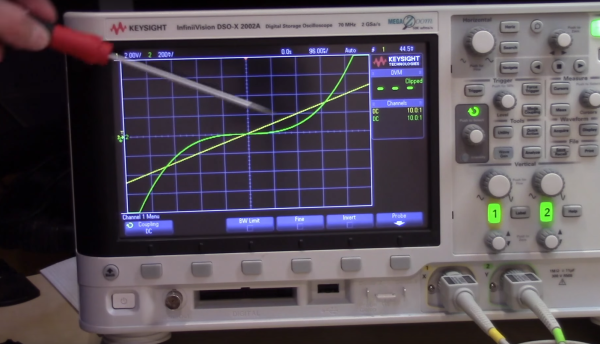As the cube is to three dimensions, the tesseract is to four. Mortals in this universe find it difficult to contemplate four-dimensional geometry, but there are methods of making projections of such heretical shapes in our own limited world. [Sean Hodgins] was interested in the geometry, and decided to build a tesseract featuring everyone’s favourite isotope of hydrogen, tritium.
The build starts with a 3D printed inner and outer frame, sourced in this case from Shapeways in nylon. Both frames have holes which are designed as a friction fit for off-the-shelf tritium vials. These vials use the radioactive decay of tritium with a phosphor coating to create a dim glow which lasts approximately a decade. With the inner frame held inside the outer with the vials acting as structural supports, the inner and outer surfaces are then fitted with semi-transparent mirrored acrylic, creating a nice infinity effect.
It’s a fun trinket that would be perfect as a MacGuffin in any sci-fi film with a weak plot. [Sean] notes that while the tritium glow is disappointingly dim, the device does make a good nightlight. If you’ve built one and get bored with the hypercube, you can always repurpose your tritium vials into a nuclear battery. Video after the break.
Continue reading “Tritium Tesseract Makes A Nifty Nightlight”

